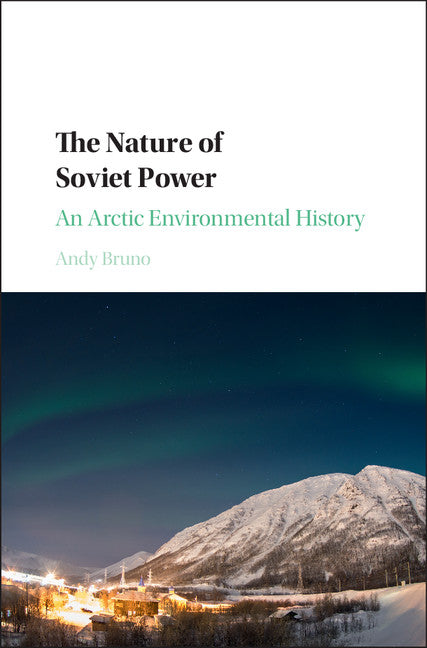Freshly Printed - allow 4 days lead
Couldn't load pickup availability
The Nature of Soviet Power
An Arctic Environmental History
This in-depth exploration of five industries in the Kola Peninsula examines Soviet power and its interaction with the natural world.
Andy Bruno (Author)
9781107144712, Cambridge University Press
Hardback, published 11 April 2016
305 pages, 10 b/w illus.
23.5 x 15.8 x 2.2 cm, 0.58 kg
'Telling the dramatic story of the far-reaching transformation of the Kola Peninsula in the Russian far north, Bruno speaks to larger truths of environmental change in the USSR and the world in the twentieth century. Well-written and deeply researched, this is a must-read book for anyone interested in the relationship between state power and environmental change and a vivid example of the best new scholarship on Russian environmental history.' Willard Sunderland, University of Cincinnati
During the twentieth century, the Soviet Union turned the Kola Peninsula in the northwest corner of the country into one of the most populated, industrialized, militarized, and polluted parts of the Arctic. This transformation suggests, above all, that environmental relations fundamentally shaped the Soviet experience. Interactions with the natural world both enabled industrial livelihoods and curtailed socialist promises. Nature itself was a participant in the communist project. Taking a long-term comparative perspective, The Nature of Soviet Power sees Soviet environmental history as part of the global pursuit for unending economic growth among modern states. This in-depth exploration of railroad construction, the mining and processing of phosphorus-rich apatite, reindeer herding, nickel and copper smelting, and energy production in the region examines Soviet cultural perceptions of nature, plans for development, lived experiences, and modifications to the physical world. While Soviet power remade nature, nature also remade Soviet power.
1. Nature and power in the Soviet North
2. Assimilation and conquest
3. Stalinism as an ecosystem
4. Deep in the tundra
5. Scarring the beautiful surroundings
6. Transforming but not transcending
7. The life of the Soviet environment.
Subject Areas: Pollution & threats to the environment [RNP], Environmental management [RNF], Industrialisation & industrial history [HBTK], European history [HBJD]


